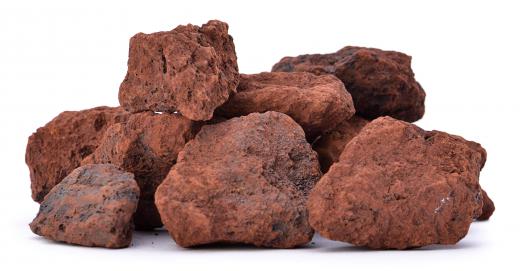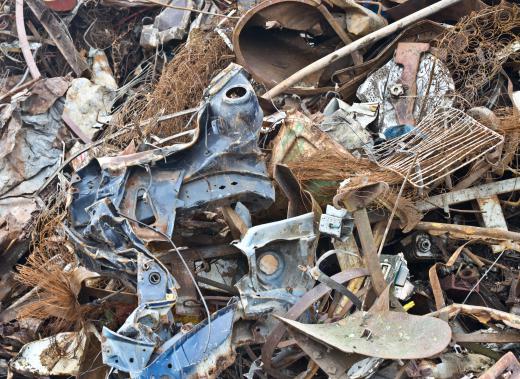Scrap iron is ferrous metal that is waste. It might come from things such as destroyed architectural structures, old automobiles or broken appliances, and it is often melted down and reworked into something that is new and useful. Although the term "scrap iron" implies that these pieces of metal are literally iron, the term also is used generally to refer to pieces of scrap material that can include other iron-based metals, such as tin, aluminum and steel.
There are numerous sites to recycle scrap iron, called scrapyards. Recycling benefits the environment and provides cheap iron for new structures or other construction projects. Resourceful citizens can find many ways to use recycled materials for projects around the home and yard, including turning it into artwork or lawn ornaments.

There are thousands of locations to recycle scrap iron. Anyone in possession of the material could sell it to a scrapyard for profit, although rates are typically lower than rates paid for non-ferrous scrap metals. Scrapyards prefer smaller pieces of scrap and typically pay more for pieces below 5 feet (1.5 m) by 2 feet (0.6 m), because these pieces do not require being broken down before they are melted. The iron is then smelted, or melted down, and formed into bars called ingots. These ingots might be sold to companies to create new iron-based items, such as cars and soda cans.

Recycling scrap iron reduces the necessity to mine iron ore, in turn lessening mining and manufacturing waste. According to the Institute for Scrap Recycling Industries, the United States annually recycles enough scrap to fill train cars stretching nearly halfway around the world. Most of this scrap is produced as waste from the industrial and manufacturing industries. Each ton (907 kg) of recycled scrap iron saves 2,500 pounds of iron (1,133 kg) ore, 1,400 pounds (635 kg) of coal and 120 pounds (54.4 kg) of limestone.
